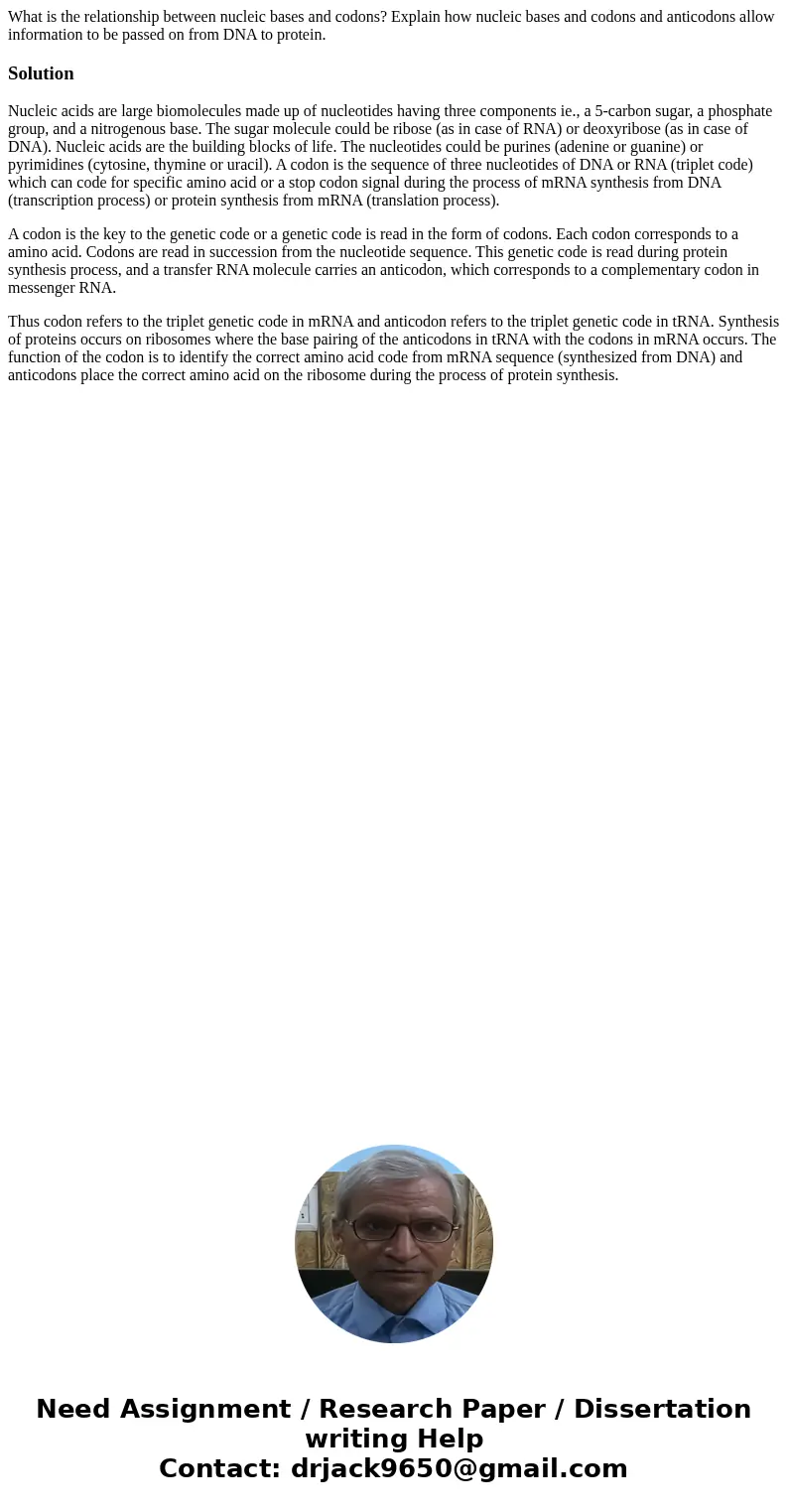What is the relationship between nucleic bases and codons Ex
What is the relationship between nucleic bases and codons? Explain how nucleic bases and codons and anticodons allow information to be passed on from DNA to protein.
Solution
Nucleic acids are large biomolecules made up of nucleotides having three components ie., a 5-carbon sugar, a phosphate group, and a nitrogenous base. The sugar molecule could be ribose (as in case of RNA) or deoxyribose (as in case of DNA). Nucleic acids are the building blocks of life. The nucleotides could be purines (adenine or guanine) or pyrimidines (cytosine, thymine or uracil). A codon is the sequence of three nucleotides of DNA or RNA (triplet code) which can code for specific amino acid or a stop codon signal during the process of mRNA synthesis from DNA (transcription process) or protein synthesis from mRNA (translation process).
A codon is the key to the genetic code or a genetic code is read in the form of codons. Each codon corresponds to a amino acid. Codons are read in succession from the nucleotide sequence. This genetic code is read during protein synthesis process, and a transfer RNA molecule carries an anticodon, which corresponds to a complementary codon in messenger RNA.
Thus codon refers to the triplet genetic code in mRNA and anticodon refers to the triplet genetic code in tRNA. Synthesis of proteins occurs on ribosomes where the base pairing of the anticodons in tRNA with the codons in mRNA occurs. The function of the codon is to identify the correct amino acid code from mRNA sequence (synthesized from DNA) and anticodons place the correct amino acid on the ribosome during the process of protein synthesis.

 Homework Sourse
Homework Sourse